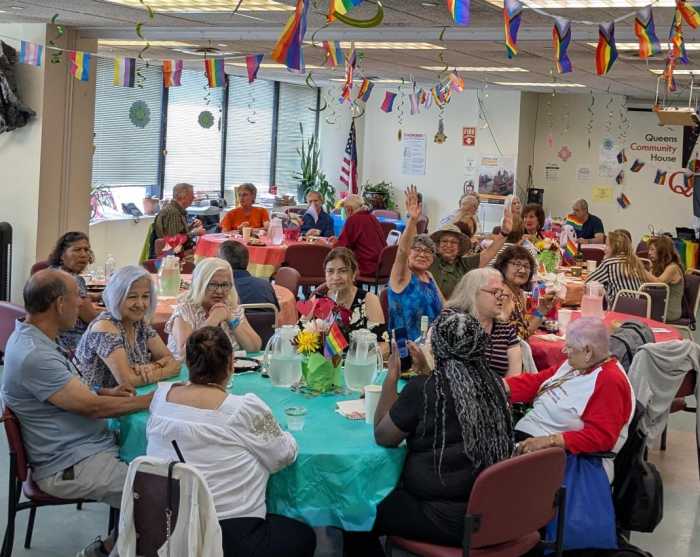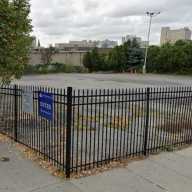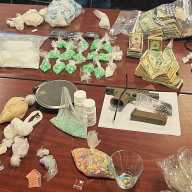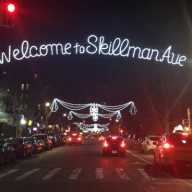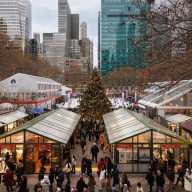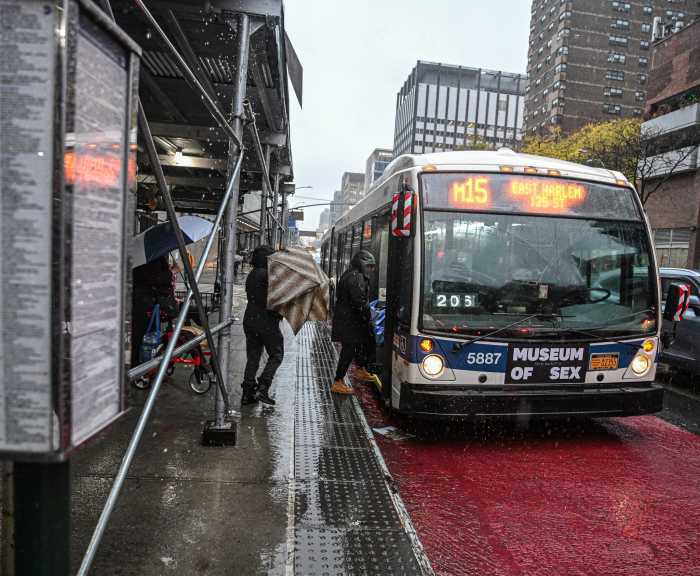Haitian Times reporter Gary Pierre-Pierre has filed the following stories from Haiti:
On Sunday Mass Was About the Dead
by Garry Pierre-Pierre
PORT-AU-PRINCE – Rosemarie Tintin’s black hat and veil barely covered the sorrow on her face. She has recently lost her entire family from the earthquake and the only place she could find solace was at her church.??But that too was not possible. Tintin was one of about 300 parishioners gathered in the courtyard of the Saint King of France church wearing their Sunday best to attend mass.??“Help me God,” she said. “Help me God.”??A hand-written note had replaced the glass marquee posting service time. “The parish of Saint Louis advised all of its faithful that there will be a mass at 6:30 AM Sunday, January 17, 2010. PS. There will be only one mass. Thanks and courage”??This was not just a regular church service. For one thing mass is usually celebrated in the pews, not in the yard. So it was on the first Sunday after an earthquake destroyed this city, survivors struggled to keep to their routine, including attending mass. ??“If you can be here today, we have to thank God because those who died did not do so because God doesn’t love them,” said one of the three priests who gave the eulogies. “So let’s pray for them so their soul could rest in peace.”??Even the House of Worships did not escape the wrath of this tremor. Sacred Heart; National Cathedral; Church of Christ… They are all in ruins. At Sacred heart, the crucifix stands erect surrounded by debris from the fallen roof and walls of one of the most popular churches in Haiti.??“God is telling us something,” said Robert Thomas to no one in particular standing in front of the church. ??On Sundays, Haitians usually gather at home with family members eating pumpkin soup and patties for brunch. But this Sunday, few people were able to pamper themselves to such luxuries. ??Since the earthquake hit on Tuesday, the days have seem like a blur to everyone and the easiness that is associated with the holy day has been a continuation of the macabre task of digging people stuck under buildings. The government has continued to scoop up bodies burying them in mass graves, offending the sensibilities of many who feel that there should be a better way.??“Oh my God, look what’s going on,” said Gerard Thomas, as health officials scooped up a few bodies that were lined up along Canape Vert Road. “Look what we, Haitians have become… some dogs are better than us.”??Prayer and masses did not start on Sunday. Throughout the week impromptu masses have taken place with people giving thanks to God. Most of them feel ashamed for having survived the calamities that have taken the lives of neighbors, relatives and friends. ??“My son was standing next to me and I tried to grab him,” said Thomas. “Then the building fell and I left. I got out and he’s dead.”??While some people found time for church, many simply were too shocked and dazed to remember that they should attend service in this deeply Catholic country. ??“I forgot,” said Lionel Guillaume when asked whether he had gone to church Sunday morning. “I don’t know what to think.”
People Didn’t Believe this was the big one
By Rachel Pratt and Garry Pierre-Pierre??
PORT-AU-PRINCE, Haiti – Marjorie Louis was sitting in her kitchen eating dinner when she felt the house shaking but she didn’t get up. ??“I didn’t think it wasn’t going to be serious…and was waiting for it to stop. But I noticed it wasn’t stopping and finally tried to get up off the table but just couldn’t get up,” said Louis, a banker who lives in Delmas. “I looked outside the window and saw a large cloud of dust and started to hear my children screaming.” ??Louis was considered among the lucky, having survived an earthquake that killed thousands of her countrymen. A few days after the seismic tremors, stories of survival, death and destruction continue to engulf this mountainous Caribbean nation of roughly 9 million people.??Her story is similar to those of millions of others after Haiti’s capital was hit with this seismic disaster. Thousands of people were killed and caught under the rubble for the same reason. They didn’t believe this was “the one” and were completely caught off guard. Haitians explained how mini-earthquakes had become the norm in recent years. But they never imagined that this catastrophe would happen in their lifetime.??“Now I know that not leaving the house and making my family leave was a mistake. I feel so empty and helpless, ” Louis said. Six others in the house never left. Fortunately they made it out alive.??According to a Haitian doctor, “there is a five second rule. If you count to five and it keeps shaking, that’s when it’s serious.” Unfortunately …this one lasted longer than five seconds. But by the time a person finished counting, it was too late to escape. ??Lyvee Memon , had just arrived home from a funeral at Sacred Heart Church – a historical landmark completely destroyed- was in her living room when the tremors began. She couldn’t believe it was the real thing and planned to wait for it to stop until the walls fell all around her. She survived and was pinned under the rubble. “I was able to find a small little hole that only a child could fit through, to make it out,” Memon said days later.??Herold Guillaume was driving along Nazon Road when his green Toyota sedan began bouncing off, thinking that someone was hitting his car. He looked up to see buildings falling all around him. Debris falling all around him as the sky was quickly covered with powered substance.??“I left the car and walked home all the while thinking about my father who was home alone,” Guillaume said.??Emmanuel Jean was on the top floor of his three-story home and his father was on the study on the first floor. The robust building crumbled like matchsticks and Jean said he barely escaped.??“I ran downstairs and looked for my father and got him out,” said Jean, an electrical engineer. Since then, Jean has been living in his backyard while making arrangements to join his mother and sisters who live in Long Island.??“I’m still in shock,” he said. “I never expected this would come. Now we have to start our lives from nothing. I don’t know what we’re going to do.”
A Night on Rue Berne: Living on the Streets
by Garry Pierre-Pierre
PORT-AU-PRINCE – Dusk had barely set and already, the residents of Rue Berne, were making their beds. These bedrooms were makeshifts arranged neatly on one side of the streets, away from shaky walls and fragile home frames that remain so dangerous.??The men, erected barricades, leaving enough room for a vehicle to navigate the tiny canyon. Soon they share whatever pasta, or rice with smoke herring. A few hours later, mothers tucked their children on near their belly and they started lo listen to the news on battery operated transistor radios and by 8 P.M, some people had already began falling asleep.??“You see what we’ve become, “ said Herold Joseph, who was born and raised in this long time middle class enclave. “The streets have become our home, no different from the stray dogs that we used to chase with sticks and stones.” ??Joseph’s house, a squat tin-roof covered house now sits feeble like every other home in Rue Berne, victim of a fierce earthquake that almost totally destroyed this capital city. In its wake millions have been displaced, their lives forever changed.??The death toll so far has reached 50,000 people, but the misery index remains countless and will never be fully known. Millions of people completely lost their homes and other houses are too unsafe for people to venture inside, rendering this city a giant homeless shelter.??The scene at Rue Berne was similar in every block in every neighborhood of this capital city, wringed by gentle mountains. In many ways, those in Rue Berne are Better off than many. Those who cannot sleep among friends in the streets, have sought shelter in courtyards of various government buildings such as the Prime Minister’s Office, the National Television Network, known as by its French acronym, TNH.??In the TNH yard, people brought their mattresses or rags to sleep on as the station produces its live coverage of the calamity. ??“We’ve been the best in terms of television coverage,” said Pradel Henriques, TNH general director. “You have to remember the rest of the country, particularly the area north of Port-au-Prince do have electricity and we’re the only station that covers the entire nation.”??Henriques said that he was worried that he may not be able to continue his coverage because equipments were being strained and broken down and he was running out of tape. ??But unlike on Rue Berne, these dwellers are permanent with nowhere to go during day time. It is their home. As the few hospitals still functioning, are overwhelmed with bodies, these government yards have been turned into makeshift health centers. Foreign doctors and their Haitian counterparts, deliver babies – most of them born prematurely, induced from the shock their mothers suffered. ??The doctors stitch wounds and make cast to mend broken bones. ??“It’s very sad, “ said Fernando Gomez, a Dominican physician sought permission from Henriques to remove an expectant mother from the yard to the Dominican border to deliver the baby by Ceasarian section. “We’re just glad we can help our neighbors during this tragedy. “??Dr. Gomez said he has worked almost none stop going from government offices to health centers to treat the injured.??“We do the best we can,” he said.??Though this was a natural disaster, man has played a large role in the calamity. For nearly four decades, Port-au=Prince, once a bucolic town of professionals, has grown into a giant slum with haphazard construction and makeshift neighborhoods.??The degradation began in the early 1960’s when dictator Francois “Papa Doc” Duvalier began bringing bus load of peasants from the countryside to come and sing his praises when the shunned leader had foreign dignitaries visiting his country. But the sinister Duvalier gave them a one-way ticket and seduced by the lights of the big city, the country dwellers stayed and abandoned their farms. ??Once such creation is the infamous Cite Soleil.??Once there, they erected tin shacks and poorly built cement above with no sewer lines and electrical grid. ??Over the years, Port-au-Prince, a city built to handle 200,000 residents, mushroomed to nearly 2 million. That number is an estimate because there hasn’t been a Census taken in nearly three decades.??“I’ve been saying this for years,” said Dr. Mathurin, a geologist. “But I didn’t have the proper pedigree and so I wasn’t taken seriously. ??Dr. Mathurin was being interviewed on Radio Signal FM, said that a Purdue University study had pinpointed this earthquake within a week of its touchdown in Haiti. ??He also said that in a way, Haiti was lucky because two earthquakes hit Haiti but their path crossed, limiting the impact. ??“We were lucky we got the aftershocks instead of the other earthquake that were to follow.”??As the dawn was settling in, residents gather their makeshifts bedrooms and quickly whisked them in their courtyards and cleared the streets. Their bathe, wash their teeth and try to live a normal life.??“It’s going to be a long time,” said Joseph, when asked how long he was going to live on the streets. “I don’t know. I don’t know. I don’t know.”??He and a group of men head off to survey the damages as if heading to work. But their task is to look at the debris and destruction that have become their beloved city.








